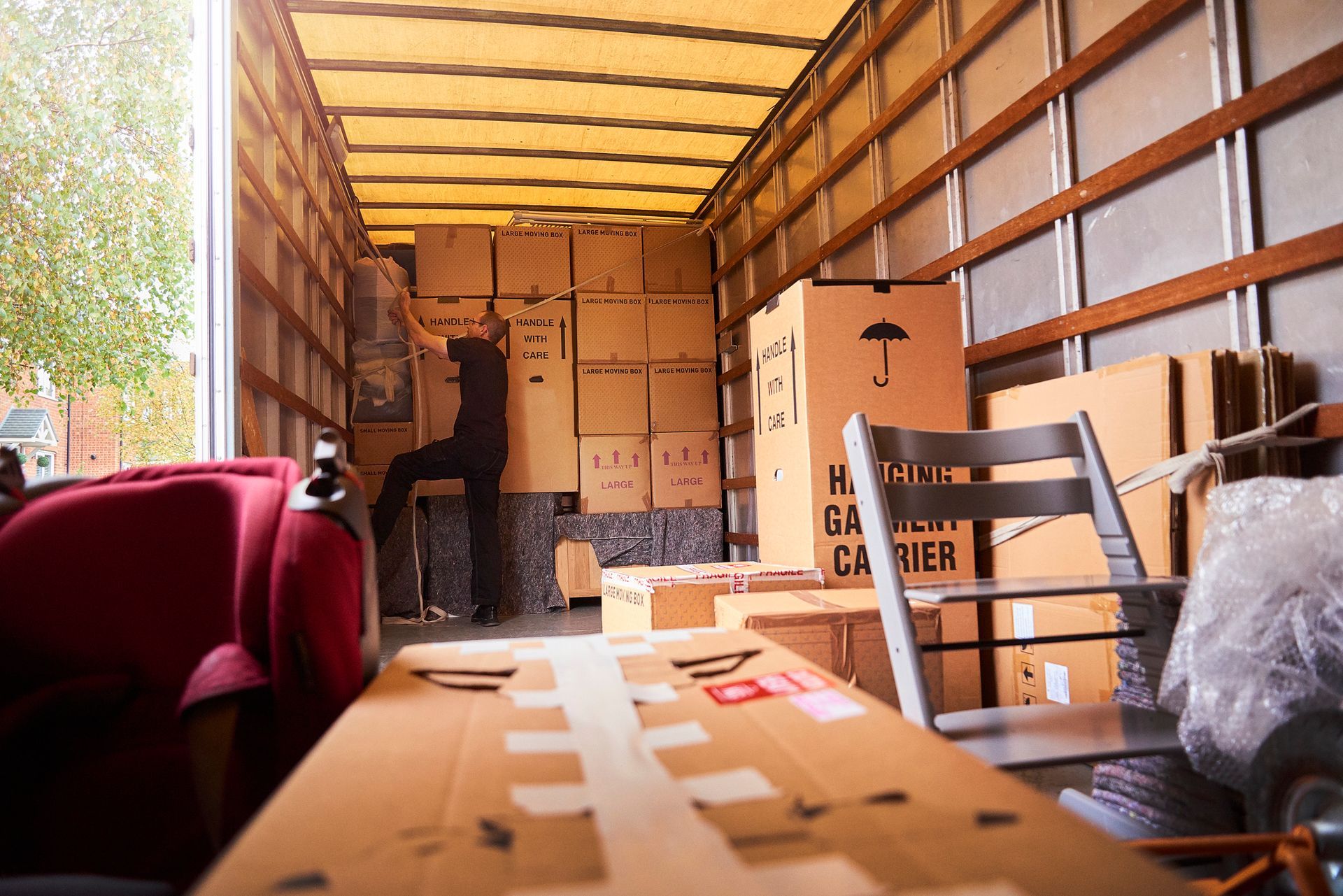Tips for Moving Fragile Antiques to Your New Home
- By Admin
- •
- 28 Jun, 2024
- •
When embarking on a residential move, transporting your fragile antiques requires meticulous planning and care. Antiques come in many forms, from exquisite porcelain vases and rare vintage furniture to delicate glassware and heirloom jewelry. Each piece holds its own unique historical and sentimental value, making its safe transit paramount. Here are some tips to help ensure your valuable antiques make it to their new home in pristine condition.
The Challenges of Moving Antiques
Antiques present special challenges during a move due to their age, fragility, and irreplaceable nature. Unlike regular household items, antiques often cannot simply be replaced if damaged. Porcelain and glass items are particularly vulnerable to chipping or shattering, wooden furniture can suffer from scratches or warping, and textiles like tapestries or antique clothing are susceptible to tearing or staining. Therefore, preparing these items properly before the move is crucial.
Pre-Move Preparations
Before you call in residential moving services, take a detailed inventory of your antique collection. Document each piece with photographs and notes on their condition. This will not only help during the packing process but also assist in insurance claims should any damages occur. Make sure to secure appropriate insurance that covers the full value of your antiques during the move.
Consulting with a professional appraiser can also be beneficial. They can provide you with an accurate valuation of your items, ensuring that you have sufficient coverage. Additionally, communicate with your moving company to understand their expertise in handling antiques and inquire about the specific measures they take to protect fragile items.
Packing Techniques for Different Types of Antiques
Glass and Porcelain
Glass and porcelain antiques require the highest level of care. Each item should be wrapped individually in acid-free tissue paper, followed by a layer of bubble wrap. Place the wrapped items in sturdy, well-padded boxes, ensuring there is minimal movement within the box. Fill any empty spaces with packing peanuts or foam to absorb shocks and vibrations during transit.
Antique Furniture
For antique furniture, disassemble pieces whenever possible to reduce the risk of damage. Wrap each part in moving blankets, securing them with packing tape. Pay special attention to ornate carvings and delicate legs, adding extra padding around these areas. Avoid placing furniture directly on truck floors; instead, use moving pads or blankets to provide a cushioned layer.
Fine Art and Paintings
Transporting fine art and paintings requires specialized equipment. Use corner protectors to safeguard the frames and wrap the paintings in glassine paper to prevent smudging or sticking. Follow this with a layer of bubble wrap and secure the entire piece in a custom-built crate if possible. For high-value art, consider climate-controlled transport options to avoid exposure to temperature extremes and humidity.
Textiles and Heirloom Clothing
Antique textiles and clothing should be cleaned and fully dry before packing to prevent mold growth. Store them in breathable garment bags or tissue-wrapped boxes. Avoid using plastic covers as they can trap moisture and cause damage over time.
During the Move
During the move, maintain close communication with your residential moving services provider. Ensure your items are placed strategically in the moving truck to minimize movement, and heavier pieces are placed at the bottom of stacks with lighter objects on top.
Consider using climate-controlled moving trucks if your journey involves extreme temperatures or if your items are particularly sensitive to environmental changes. Constant temperature control can prevent wood from warping and textiles from becoming brittle.
Unpacking and Settling In
Once you arrive at your new home, immediately inspect your antiques for any potential damage caused during the move. Refer to your pre-move documentation to compare the condition of each item. Unpack with the same level of care as you did while packing, ensuring that each piece is handled gently.
Position your antiques in their new spaces thoughtfully, considering factors like light exposure and humidity levels. For instance, avoid placing wooden furniture in direct sunlight to prevent fading and warping, and keep delicate textiles in cool, dry areas.
Moving your fragile antiques can be a daunting task, but with careful preparation and the right residential moving services, you can ensure that your items arrive safely and in pristine condition. By understanding the specific needs of each type of antique and working closely with professionals, you can preserve the beauty and value of your treasured belongings for years to come. If you are moving homes, contact Los Flores Movers for professional residential moving services.
The Challenges of Moving Antiques
Antiques present special challenges during a move due to their age, fragility, and irreplaceable nature. Unlike regular household items, antiques often cannot simply be replaced if damaged. Porcelain and glass items are particularly vulnerable to chipping or shattering, wooden furniture can suffer from scratches or warping, and textiles like tapestries or antique clothing are susceptible to tearing or staining. Therefore, preparing these items properly before the move is crucial.
Pre-Move Preparations
Before you call in residential moving services, take a detailed inventory of your antique collection. Document each piece with photographs and notes on their condition. This will not only help during the packing process but also assist in insurance claims should any damages occur. Make sure to secure appropriate insurance that covers the full value of your antiques during the move.
Consulting with a professional appraiser can also be beneficial. They can provide you with an accurate valuation of your items, ensuring that you have sufficient coverage. Additionally, communicate with your moving company to understand their expertise in handling antiques and inquire about the specific measures they take to protect fragile items.
Packing Techniques for Different Types of Antiques
Glass and Porcelain
Glass and porcelain antiques require the highest level of care. Each item should be wrapped individually in acid-free tissue paper, followed by a layer of bubble wrap. Place the wrapped items in sturdy, well-padded boxes, ensuring there is minimal movement within the box. Fill any empty spaces with packing peanuts or foam to absorb shocks and vibrations during transit.
Antique Furniture
For antique furniture, disassemble pieces whenever possible to reduce the risk of damage. Wrap each part in moving blankets, securing them with packing tape. Pay special attention to ornate carvings and delicate legs, adding extra padding around these areas. Avoid placing furniture directly on truck floors; instead, use moving pads or blankets to provide a cushioned layer.
Fine Art and Paintings
Transporting fine art and paintings requires specialized equipment. Use corner protectors to safeguard the frames and wrap the paintings in glassine paper to prevent smudging or sticking. Follow this with a layer of bubble wrap and secure the entire piece in a custom-built crate if possible. For high-value art, consider climate-controlled transport options to avoid exposure to temperature extremes and humidity.
Textiles and Heirloom Clothing
Antique textiles and clothing should be cleaned and fully dry before packing to prevent mold growth. Store them in breathable garment bags or tissue-wrapped boxes. Avoid using plastic covers as they can trap moisture and cause damage over time.
During the Move
During the move, maintain close communication with your residential moving services provider. Ensure your items are placed strategically in the moving truck to minimize movement, and heavier pieces are placed at the bottom of stacks with lighter objects on top.
Consider using climate-controlled moving trucks if your journey involves extreme temperatures or if your items are particularly sensitive to environmental changes. Constant temperature control can prevent wood from warping and textiles from becoming brittle.
Unpacking and Settling In
Once you arrive at your new home, immediately inspect your antiques for any potential damage caused during the move. Refer to your pre-move documentation to compare the condition of each item. Unpack with the same level of care as you did while packing, ensuring that each piece is handled gently.
Position your antiques in their new spaces thoughtfully, considering factors like light exposure and humidity levels. For instance, avoid placing wooden furniture in direct sunlight to prevent fading and warping, and keep delicate textiles in cool, dry areas.
Moving your fragile antiques can be a daunting task, but with careful preparation and the right residential moving services, you can ensure that your items arrive safely and in pristine condition. By understanding the specific needs of each type of antique and working closely with professionals, you can preserve the beauty and value of your treasured belongings for years to come. If you are moving homes, contact Los Flores Movers for professional residential moving services.
Relocating your business to a larger space is an exciting milestone for any business owner. Read our blog to learn how to make the move successful.
While DIY moving may appear to be cheaper on the surface, it can eventually cost you more. Read on to see how hiring professionals can help you save!
If you're an empty-nester who wants to downsize your home, a professional moving company can help. Learn more about how experts can make the process easier.
You should keep some items with you during your move in a separate bag. Take a look at what you need to know about a summer moving essentials bag.
You should keep some items with you during your move in a separate bag. Take a look at what you need to know about a summer moving essentials bag.
When it comes time to pack up your office and move to a new building or room, coordination of that move can be difficult. Read to learn a few tips.
Do you need to move on short notice? If so, read our blog to learn about a few tips that can help you stay organized and have a successful transition.
The moving process involves several steps for success. Since the whole process can be confusing, consider these tips to make moving day a breeze.
Moving is one of the most stressful life events that individuals and families will ever face. Here are the benefits a moving company provides.

